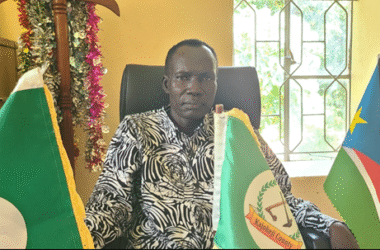By Staff Writer
IGAD Climate Prediction and Applications Centre (ICPAC) has officially released the seasonal climate forecast for March to May (MAM) 2025.
This season is crucial for the equatorial regions of the Greater Horn of Africa, contributing up to 60% of the annual rainfall in many areas.
The MAM forecast indicates a higher likelihood of below-normal rainfall conditions across the eastern and western parts of the region.
Key Highlights
Below-average rainfall is anticipated in much of Somalia, eastern and northern Kenya, southern and northeastern Ethiopia, Djibouti, coastal Eritrea, western South Sudan, and southern and western Uganda.
Additionally, Rwanda, Burundi, and northwestern Tanzania are also likely to experience below-normal rainfall.
There is a heightened chance of below-normal conditions in the cross-border areas of Ethiopia, Kenya, Somalia, northeastern Ethiopia, southern Eritrea, and parts of southwestern South Sudan.
It further indicates that wetter-than-normal conditions are expected in most parts of Tanzania, eastern Uganda, eastern South Sudan, and western Ethiopia.
There is a significant chance (over 70%) that seasonal rainfall will exceed 200 mm in southwestern Ethiopia, western Kenya, Uganda, Rwanda, Burundi, and Tanzania, according to the forecast.
The temperature forecast suggests a greater likelihood of warmer-than-normal conditions across most areas of the Greater Horn of Africa, particularly in Sudan, Ethiopia, Eritrea, Djibouti, northern Somalia, and northern Kenya, where the probabilities exceed 75%.
An early to normal onset of rains is expected in most parts of the region, with localized areas in central Kenya, southern Ethiopia, and central Somalia likely experiencing a delayed start.
The predicted climatic conditions for this season may have gender-differentiated impacts on affected populations, with more adverse effects anticipated for women, children, the elderly, and persons with disabilities.
ICPAC urges all stakeholders to take proactive measures to mitigate these impacts on the most vulnerable groups.
Dr. Abdi Fidar, the Officer-in-Charge at ICPAC, stated, “As the IGAD region faces increasing climate variability and extremes—such as droughts, floods, and rising temperatures—platforms like GHACOFs are essential for building a shared understanding of risks and fostering collaboration to mitigate their impacts.”
He further emphasized the theme of the forum, “Climate Services for Closing the Early Warning Gap Together,” which highlights the critical role of actionable, timely, and accurate climate information in bridging gaps in preparedness and response.
H.E. Mr. Motumma Mekasa, State Minister and Advisor to the Minister of Water and Energy for the Government of Ethiopia, acknowledged IGAD’s key role in promoting regional integration and collaboration.
“We commend IGAD’s efforts as a regional institution fostering integration among member states. In addition to its significant contributions to peace and security, IGAD’s initiatives aimed at addressing climate change are vital for ensuring sustainable development and safeguarding livelihoods in this region. We look forward to IGAD’s continued support in institutionalizing climate services across the region,” he remarked.
In alignment with the recommendations of the World Meteorological Organization (WMO), ICPAC has implemented an objective seasonal forecasting procedure to generate climate forecasts for the Greater Horn of Africa (GHA).
The MAM seasonal outlook was developed using forecasts from January 2025 provided by nine Global Producing Centres (GPCs).




